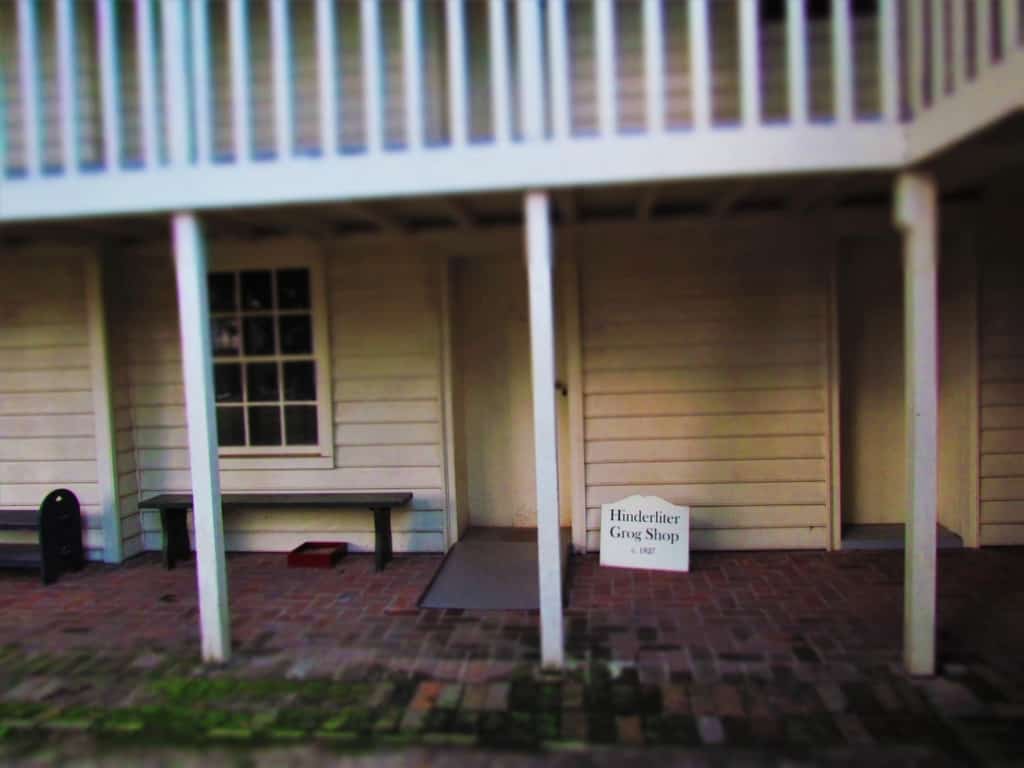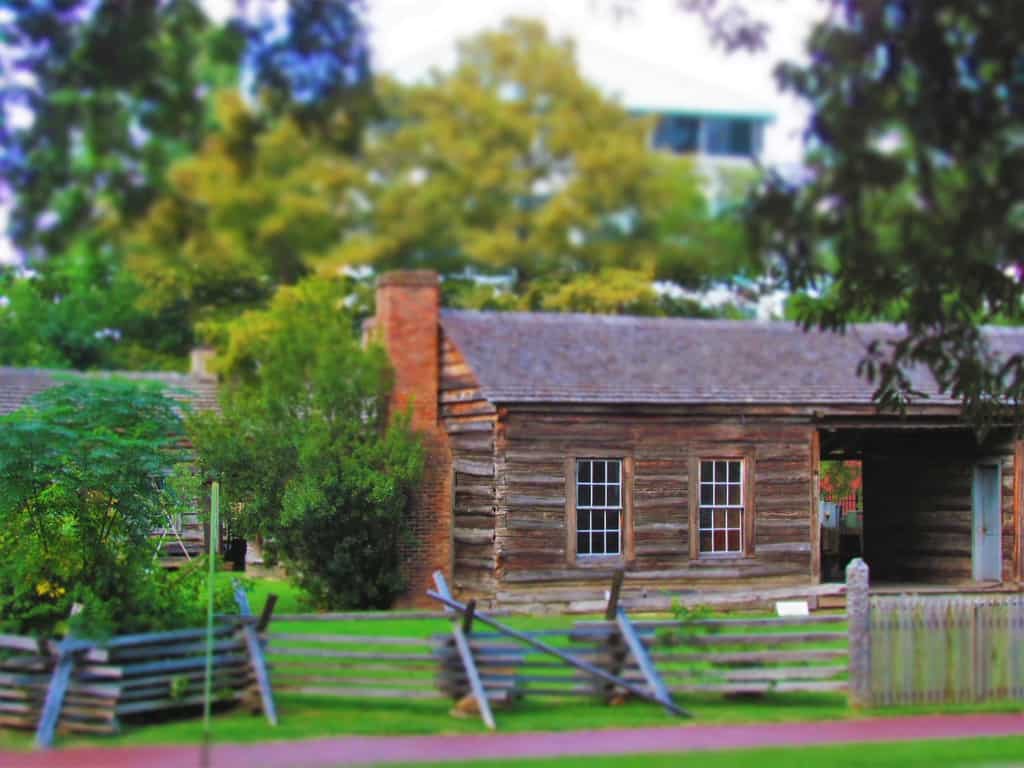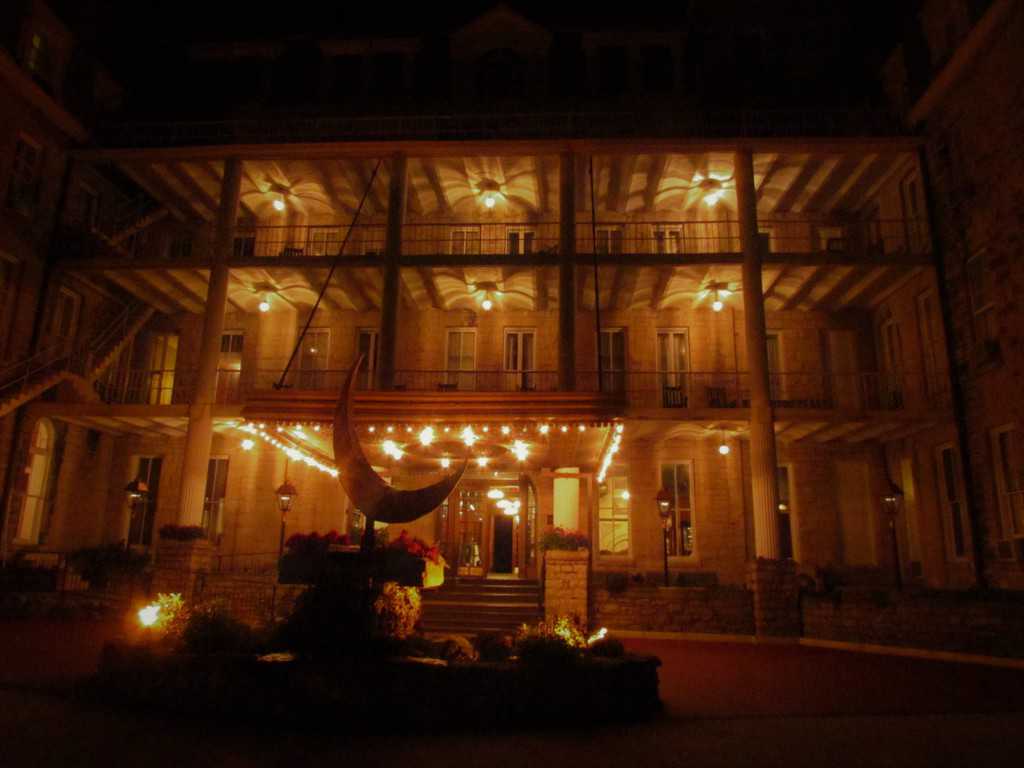Little Rock is a city filled with history and we love to learn about the beginnings of the destinations we visit. A stop at the Historic Arkansas Museum was sure to provide a good backdrop for us to find out about the start of the river town. Little did we realize that here we would see history come to life. Located in the heart of the downtown River Market section of the city made it a perfect fit for us, since our lodging was only a couple of blocks away. (Read more about the River Walk area here.)

Start at the Beginning
After entering the Historic Arkansas Museum, we met our tour guide. A quick overview of the facility and we were ready to start our tour. The museum has two main parts, with the first section consisting of a group of historic buildings. The museum got its start by a resident who wanted to preserve four run down buildings near the state’s capital. She recognized the historical value of these structures, which include the Hinderliter Grog Shop. Built around 1827, this log cabin structure eventually was covered with planking to resemble many of the other clapboard structures that came later. Underneath this exterior lies the original logs used in the construction.

History Comes to Life at the Historic Arkansas Museum
Inside of the grog shop we found one of the staff members who help bring the history to life. Our guide was excellent at describing all of the historical aspects of the site. The museum also has some Living History actors who portray the people who would have occupied these abodes. As we listened, we heard tales of what life would have been like in that era. He walked us through some of the artifacts on display and their usage in daily life. This is a great way to get a better understanding of the history we are seeing, as the actors help bring history to life.

Old and New
As were moved from building to building, we would catch sight of some of the newer high-rise structures nearby. Being located in the heart of the thriving downtown makes this museum unique. We would tour the inside of a couple of the older structures, and be all wrapped up in the stories, when suddenly this reminder would bring us back to current time. Quite an experience and testament to our guides ability to transport us with his descriptions of those long ago days.

Putting it on Paper
In the Woodruff Print Shop we found another actor on duty. This building is home to a New Yorker who came to Arkansas, in 1819, to start a newspaper. He would eventually move his business to Little Rock, after it became the territorial capital. The interior of the building contains furnishings owned by Woodruff, as well as a replica of the printing press he brought to Arkansas on a keelboat. We listened as this character explained the political and economic atmosphere of Arkansas in the early 1800’s. Soon enough, he was hard at work running copies of his daily post for the eager customers who occupied the township. Once again, the education of the historical events were brought to life by a staff member.

Back to the Present
After our tour was completed, we were ushered back to the main portion of the Historic Arkansas Museum. Our guide explained the layout of the building and left us to explore on our own. The museum is a combination of galleries that include component from all over Arkansas. We wandered through the rooms filled with artwork, jewelry, and furniture created by Arkansas residents.

A Familiar Name
One room is filled with a vast collection of Bowie knives. In the early days of the state, Arkansas was considered the edge of the United States. Filled with tough characters, it would be easy to picture them equipped with an “Arkansas Toothpick”. This is the nickname given to the Bowie knife, which is well represented in the museum. Many of these fantastic creations came from Arkansas, including Bowie No. 1, which is believed to be the original piece created by James Black for Jim Bowie. This “defensive” weapon was highly favored throughout the frontier regions.

Honoring the First People
We passed into another section of the Historic Arkansas Museum, and came to the collection titled “We Walk in Two Worlds”. This exhibit tells the story of the first people to inhabit the lands now known as Arkansas. The displays are filled with over 150 relics and artifacts from the Caddo, Osage, and Quapaw nations. If you followed the displays through the exhibit, it will take you chronologically through time.

Voices for the Past
The Historic Arkansas Museum has done a great job of helping visitors better grasp the impact of civilization’s growth. Throughout the “Two Worlds” displays, you will hear the voices of some of the descendants from the original tribes. These help explain how the changes over time have affected the cultural aspects of the Indian nations. It is quite enlightening to hear the history in their own words, as it helps bring the history to life. Definitely a section of the museum not to be overlooked.

Ready to Explore Little Rock
Now that we had visited the Historic Arkansas Museum, we had a better grasp on how the city got started. This gave us a new perspective on the sights we saw as we traveled around the city. We could almost picture the dirt roads and early structures that dotted the streetscape in the 1830’s. While Little Rock has grown into a thriving metropolis, it is nice to see that it still holds firm to its frontier origins. When you visit, be sure to save some time to get your bearings at this wonderful museum complex. Tell them you heard about them from Our Changing Lives, and hopefully they will remember our visit. It is certainly a great way to see history come to life. Safe travels!

Share this with a history buff!





